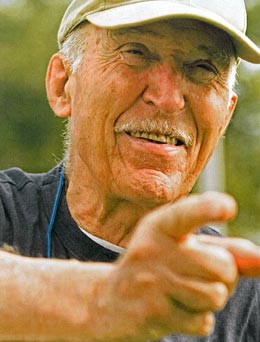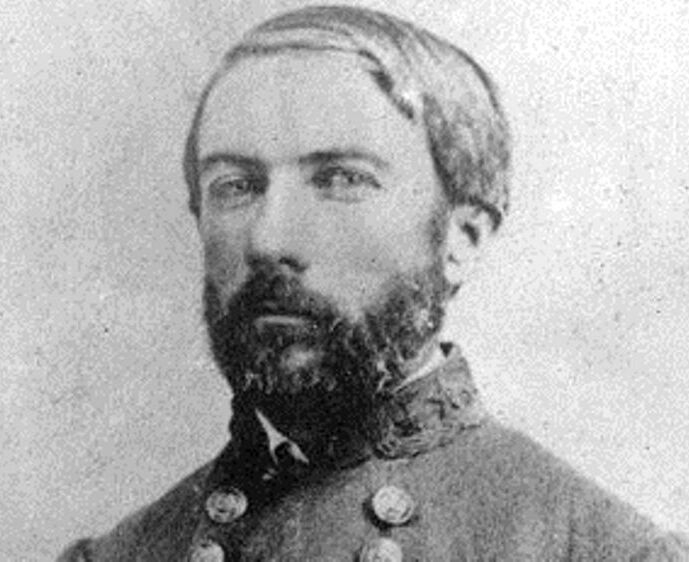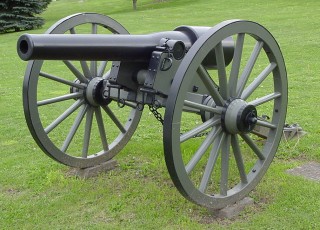By Daniel J. Ursu, Roundtable Historian
The Cleveland Civil War Roundtable
Copyright © 2021-2022, All Rights Reserved
Editor’s note: This article was the history brief for the December 2021 meeting of the Cleveland Civil War Roundtable.
Most of my recent history briefs have focused on aspects of the Western Theater of the Civil War. This month, we return to the Eastern Theater with a look at General McClellan’s use of heavy artillery and especially that which he massed on the eastern ridge of Antietam Creek during the Battle of Antietam, September 17, 1862. For those who went on the field trip in September of 2018 to Antietam/Harpers Ferry during my year as Roundtable president – or otherwise have visited the site – please recall the Pry House which rests on that ridge. Although Union artillery was positioned at many points along the ridge, the heaviest of the pieces were just to the south of the Pry House on either side of the Boonesboro Pike.

At McClellan’s most well-known victory of his career, artillery was clearly important to this battle. No less than the incomparable Mr. Ed Bearss, Historian Emeritus, National Park Service, points this out in his foreword to the book Artillery Hell – The Employment of Artillery at Antietam by Curt Johnson and Richard Anderson. Mr. Bearss recalls some of his early visits to Antietam National Battlefield Park. Sayeth Mr. Bearss, “Although I did not appreciate it in 1950, Antietam National Battlefield Site lacked an important and popular interpretive feature…Unlike at Gettysburg, Chickamauga, Chattanooga, Shiloh, and Vicksburg – at Antietam few if any cannon were…about the field. This was strange because of the important role played by the ‘long arm.'”

For whatever one thinks about the qualities of Major General George H. McClellan, he is widely praised for his ability to reorganize the Army of the Potomac, train it, and create an esprit de corps. He also paid much attention to its artillery. In command at Antietam, he certainly showed this leading up to the Battle of Antietam by increasing the authority of a key figure who would bolster the Army of the Potomac’s artillery arm for the remainder of the war – General Henry J. Hunt.
McClellan developed an interest in artillery over time and served as an engineer under General Winfield Scott during the Mexican war. McClellan helped to construct battery emplacements during the 20-day coastal siege of Vera Cruz in 1847. It is said that McClellan became even more interested in heavy artillery – and in particular siege artillery – during his involvement with a group of American military observers during the Crimean War. They witnessed part of the siege of Sevastopol, which took place from October 1854 to September 1855 and employed some of the largest pieces of siege artillery at the time.
In his well-known Peninsular Campaign preceding the Seven Days Battles near Richmond, Virginia, McClellan, hearkening back to what he saw at Sevastopol, had assembled some of the heaviest, most powerful artillery pieces in the world. These included 8-, 10-, and 13-inch seacoast mortars and 30-, 100-, and 200-pound Parrott rifles. Unfortunately for McClellan, he was infamously “faked out” at Yorktown, Virginia by the Confederate commander John Magruder. After the excellent array of siege artillery was laboriously put into place, it was discovered that the Confederates had abandoned their position. Of course, had the Confederates stayed, they would have been obliterated by the firepower amassed by McClellan.
In the Professional Papers of the Corps of Engineers, U. S. Army, published by the Authority of the Secretary of War in 1867 and reprinted by the University of Michigan, the book Siege Artillery in the Campaigns Against Richmond, with Notes on the 15-Inch Gun, including an Algebraic Analysis of the Trajectory of a Shot in its Ricochets upon Smooth Water, much is made in the personal accounts of the feat of assembling the siege train by McClellan and transporting it by those officers charged with the work. For instance, Major Alex Doull, Ordnance Officer, states, “The 13-inch mortars and the mortar shells were run into Wormley creek at night in a barge, taken up to the battery and landed at a wharf constructed for that purpose at one end of the battery. This was done by raising the mortars by the gin, placing rollers under them, rolling them to a port cut in the side of the barge, raising them by successive lifts with the sling cart screw worked by drag ropes until hung as high as possible, and then running them nearly on to the platform; where they were again placed upon rollers, rolled into position, lifted by the gin and the carriage place underneath.” He further asserts that the project of moving such pieces was more impressive than the English at Sevastopol. To wit, most of the siege pieces in the Crimea weighed about 10 or 11 thousand pounds. This is contrasted to the Union army siege train with significantly larger pieces. For instance, a 200-pound Parrott rifle weighed 16,570 pounds and the 13-inch mortar 17,120.

Although the siege train was left behind for the Antietam Campaign, McClellan saw to it that his army did have in tow numerous 20- and 10-pound Parrotts, which were among the heaviest artillery pieces that could accompany an army on the march. Their rifled barrels gave them accuracy to about a mile at 5 degrees elevation – and coupled with their heavy shot, truly made them the “long arm” that Mr. Bearss referenced at Antietam.
And that is exactly what McClellan wanted at Antietam – a massed battery with range and weight of fire. Upon his arrival at the field of Antietam, McClellan observed from the Pry House the Confederate positions taking shape on the other side of the creek. He gave orders to General Hunt to place what he referred as his “pieces of position” to dominate the upcoming battle by his artillery and especially the Parrotts.

From the biography of General Hunt by Edward Longacre, The Man Behind the Guns, the author states, “That evening the commanding Major General gave Hunt instructions to emplace long range cannon on the east bank of Antietam Creek, across from Lee’s positions along ridges outside Sharpsburg. Little Mac provided only a general idea of his intention and offered some suggestions for the heaviest ‘pieces of position’ – these to spearhead a general attack on the seventeenth. The next dawn, Hunt…rode along the heights adjacent to the creek, scrutinizing the terrain and selecting the position to be occupied by the 20 and 10 pounder Parrotts…Hunt’s task was complicated by the fire of Lee’s longest ranged cannons, but…(Hunt) completed his errand…to McClellan’s full satisfaction.” It should be noted that McClellan’s skillful instruction to Hunt to locate the Parrotts in about the middle of the Union line gave their superior range and accuracy the ability to hit almost anywhere along the Confederate lines and oftentimes in enfilade; this was especially so in General Hooker’s opening dawn attack on the Confederate left.

As the battle progressed, we know in hindsight that McClellan’s battle plan evolved into essentially three separate attacks throughout the 17th from north to south along the line – historians note that he squandered his superior numbers. Again, from The Man Behind the Guns, “Hunt’s gunners did their utmost to neutralize the harm caused by McClellan’s faulty tactics, rendering a particularly devastating fire to cover General Hooker’s early morning assault…Lee nevertheless returned a barrage as fierce as he received.”
Indeed, the Confederates recognized and fully felt the effect of McClellan’s “guns of decision.” In The Long Arm of Lee, Volume I: Bull Run to Fredericksburg, Confederate author Jennings C. Wise notes, “All during the successive and more or less isolated attacks…left…center …and right, Hunt’s great masses of guns played upon the Confederate batteries and their infantry lines, adding the tremendous weight of their metal to that of the corps and division batteries, we may judge from the report of D. H. Hill, who…controlled the largest group of Confederate guns. ‘Positions were selected for as many of these guns as could be used, but all the ground in my front was commanded by the long-range artillery of the Yankees, on the other side of the Antietam, which concentrated their fire upon every gun that opened and soon disabled it.’…Col. S. D. Lee…afterwards declared that ‘Sharpsburg was Artillery Hell.’ The latter statement is no doubt correct.”

D.H. Hill 
S.D. Lee
Further from the book Artillery Hell – The Employment of Artillery at Antietam, the authors exhaustively list each battery and its armament. For the North, they list a total number of 30 for the 20-pound Parrotts and 42 for the 10 pounders concentrated in about twenty batteries. For the South, only four 20-pound Parrotts were in the field and 36 of the 10-pound pieces. Conversely, these were spread out over numerous batteries as was the Southern way. In other words, in at least several decisive ways, McClellan’s employment of long-range artillery outdid the South – through concentration of tubes, superior range, and weight of fire. The South had far fewer heavy Parrott rifled guns, and the ones they had were mostly diluted throughout the field of battle.

In sum, if one agrees with Mr. Bearss that Antietam was greatly influenced by artillery, and if one accepts that such artillery can help tip a Civil War battle one way or the other when well employed, we must and should give McClellan credit for bringing a preponderance and superior mix of artillery to the field on September 17, 1862. This, then, set the table, at least in part, for one of the most important Union victories of the war, and certainly McClellan’s apex as a commanding general.
Click on any of the book links on this page to purchase from Amazon. Part of the proceeds from any book purchased from Amazon through the CCWRT website is returned to the CCWRT to support its education and preservation programs.
